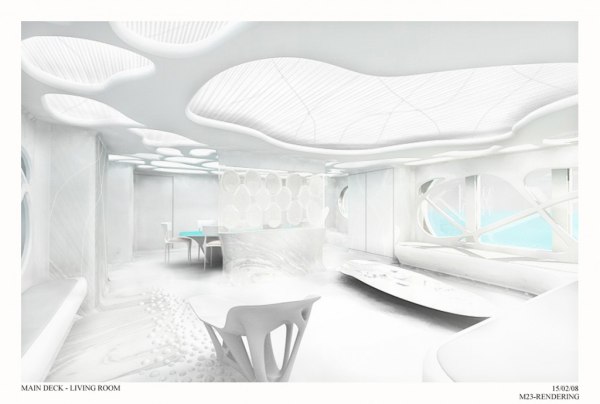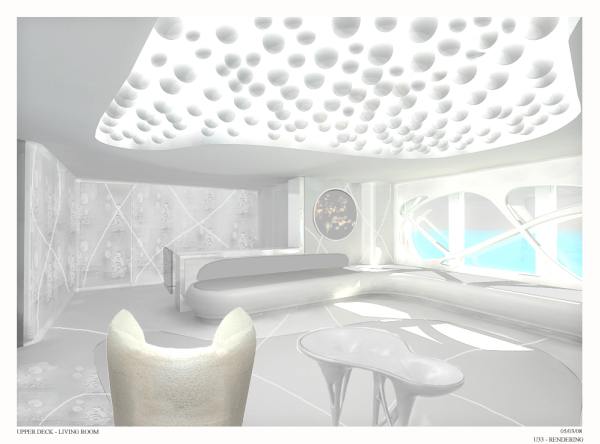The ghost in the machine – interview with Paul Prudence
Paul Prudence is not only known for his generative, real-time visuals, but also for his excellent blog,dataisnature. We meet in his home town – London – and talk about his recent visit to Node08 in Frankfurt, his interest in videofeedback and his latest work, sonLattice.
 Dataisnature focuses on current developments in audiovisual and generative art, but also on scientific research and historical work, like early computer art. The study of these contexts and Paul’s artistic practice are two sides of the same coin. His interest in computational and visual feedback systems have resulted in works like Talysis – geometric forms that keep transforming into new ones, folding and unfolding in a never-ending loop. From these studies sonLattice has evolved.
Dataisnature focuses on current developments in audiovisual and generative art, but also on scientific research and historical work, like early computer art. The study of these contexts and Paul’s artistic practice are two sides of the same coin. His interest in computational and visual feedback systems have resulted in works like Talysis – geometric forms that keep transforming into new ones, folding and unfolding in a never-ending loop. From these studies sonLattice has evolved.Paul Prudence: There are a lot of similarities between the artistic and the scientific world, and in the computer and video arts area this is especially clear: you have scientists that try to model nature using algorithms and cellular automata, and artists using these same things to create art. The mathematics behind something like videofeedback is very similar to things you find in nature, like for example interference patterns and waves.
Working with videofeedback, is almost like working with a natural system. Artists are scientists again. They can put everything in a petri dish and watch what happens. What happens when we change this system, take parts out, or use different frequencies? You have this constant interplay between individual elements which also affects the whole. This creates generative aspects that are totally outside the person and the program. They exist within their own right. To me that is verging on a level of alchemy or mysticism. It’s not determined any more by the program – it’s some ghost in the machine.
It’s interesting to notice that when you start building from the visual system first, you listen to sound visually. You become less obsessed with what it sounds like; instead you get interested in what the sounds look like.
From the patterns that are formed, you pick out different parts from a certain system and then move on to the next system, in that way constructing the work. But I definitely don’t want to make these closed systems that I can plug into any sound.
For Node08 I started experimenting with audio responsive generative pieces that I use in my VJ work. The fundamental question about audio responsive generative graphics for me is: what are you trying to say in terms of movements? How do you approach the method with which you translate audio into visuals? What’s the code, the language you’re using? What does it mean?
 Tell me something more about your latest work. What is sonLattice exactly?
Tell me something more about your latest work. What is sonLattice exactly?sonLattice is a version of Talysis, the piece I made before. All my pieces are versions, constantly alive, but the essential structure remains the same. So sonLattice is essentially a feedback loop, which creates very complex structures through recursion. I got interested in the harmonic properties of video feedback, which allow you to make visual representations that act like waves. You get very complex systems, not through elaborate textual programming, but through simple feedback loops.
sonLattice is essentially one square dot, which is fed through a recursive feedback loop to produce a space of many items. This original, creator dot can move in different directions or change size or appearance or colour according to certain frequencies. One set of frequencies effects the colour parameter – the high frequency might make a horizontal movement, and the low frequency has a vertical direction.
The data from the incoming sound is analysed, and a frequency or volume will inform certain parameters. Because this a put through a feedback loop, you get a very specific reading of sound which fills the space on the screen.
 Why did you create sonLattice?
Why did you create sonLattice?I made my first videofeedback film because of an invitation by Wilfried Houjebek, who commissioned me to go to the Crystal Punk workshop for Soft Architecture, which of course sounded so good I couldn’t refuse.
When something comes along I always say yes, regardless of whether I think it can be done or not. My best work usually comes from commissioned work, when there is a certain audience in mind. If not, you tend to lose yourself in all the paths it can take. A restriction helps me to pull off my best stuff.
So when another festival in Brazil asked me to make a version with user interaction, I started experimenting with a lot of VJ software. But I couldn’t really find the answers I was looking for, so I started to think about programmable software and came across Max MSP and later 4V.
As with any piece of software there is always a learning curve. But then you have a breakthrough moment, and meaning comes from it, for example the idea of the machine interfacing with itself, is something I am really interested in.
 What software do you use and why do you use it?
What software do you use and why do you use it?I used to work with Flash a lot – now I work mostly with 4V. Occasionally with VJ sets I work with my own processed video, sometimes used in conjunction with other software like Resolume, but then it is really in a club or VJ setting.
Sometimes I use footage I’ve shot and process that in some video editing software and then use those textures and feed them into 4V. Texture shapes are then informed by sound, so the work becomes audio responsive.
4V is purely set up for video, so it has all the tools to make really complex animations. Also the program has powerful nodes that allow you to make complex process procedures very easily. There are so many things I really like about 4V – the speed, the interface, also the community… The developers are some of the nicest people I have met.
I get a bit bored if I only write pure strict code. Of course it serves it’s purpose but it can take the fun out of making art. I feel that the greatest work of artists that work with digital means usually springs from some kind of revelation, a combination of accident and chance.
 What is your view on the developments in your field of work? It seems a lot of people are still obsessed with technique.
What is your view on the developments in your field of work? It seems a lot of people are still obsessed with technique.Mitchel Whitelord on his blog ‘The Teeming Void’proposes that generative art is the akin to a kind of neo-baroque, because it is has a lot to do with visual stimulation and decoration. I quite like that idea. But I don’t mind that artists are obsessed with the technique they use, as long as they get beyond that.
I am very much interested in aesthetics and formal visual representation. Meaning comes from it, once you start interrogating what’s below, or the surface of the system, if you’re interested. I don’t really care if people are interested in cybernetics, videofeedback or recursion – concepts that are dear to me. If people want to know more, I am happy to explain things to them, but I also like the idea of making something purely aesthetic that people can engage with on their own level.
Interior of a yacht
Owing a personal luxury yacht is not enough to make up for a status symbol. You got to embellish its interiors so as to hold your visitors in awe. Giancarlo Alhadeff, an Italian designer and Michael Lewis have taken up the job of beautifying the 164-foot ship hailed as ‘My Tzarina.’
The design architecture here is futuristic, coralline and believes in setting smooth corners devoid of right angles thus seamlessly integrating the interiors and fixtures to given an impression of sea-and-sky set up. The architecture intends to bestow upon the user the experience of gliding through the inside of coral reef as sunlight would make its way through water surface. The choice of colors here are restricted to that of aqua-marine with soft fluid lines to retain the sea-like ambience.
The yacht which is being worked upon belongs to a Russian a real estate developer and hopes to set a milestone in the arena of yacht design. As you can see, the opportunities for design fraternity is growing by leaps and bounds, for their work was initially restricted to office and residential spaces and now even ships. So can we expect private jets and luxury airlines to follow the cult too?
Although Vitruvius’s treaties included clocks, waterworks and mobile war machines, architecture is often understood to be an art of space, not of time. Architecture’s traditional role has been the spatial backdrop to social interaction: In the 20th Century, Archigram’s ‘Instant City’, Negroponte’s ‘Soft Architecture Machines’, Price’s ‘Fun Palace’, ‘and ‘Generator’ projects challenged this axiom, imagining and constructing architectures that were interactive participants in their own right. While these architectures borrowed much from the mechanical automata, kinetic sculpture and early cybernetic arts, they imagined more than simple choreographed kinetics routines. They suggested an architecture able to propose and negotiate its own kinetic behaviour with the world around it, one that could enter into a conversation (or even perhaps a dance) with its inhabitants. Often however, these visions of interactive architectures were limited to the drawing board by the technical possibilities of the time. Today’s technology places architects on the threshold of a new era of ‘intelligent’ kinetic architecture.











No comments:
Post a Comment